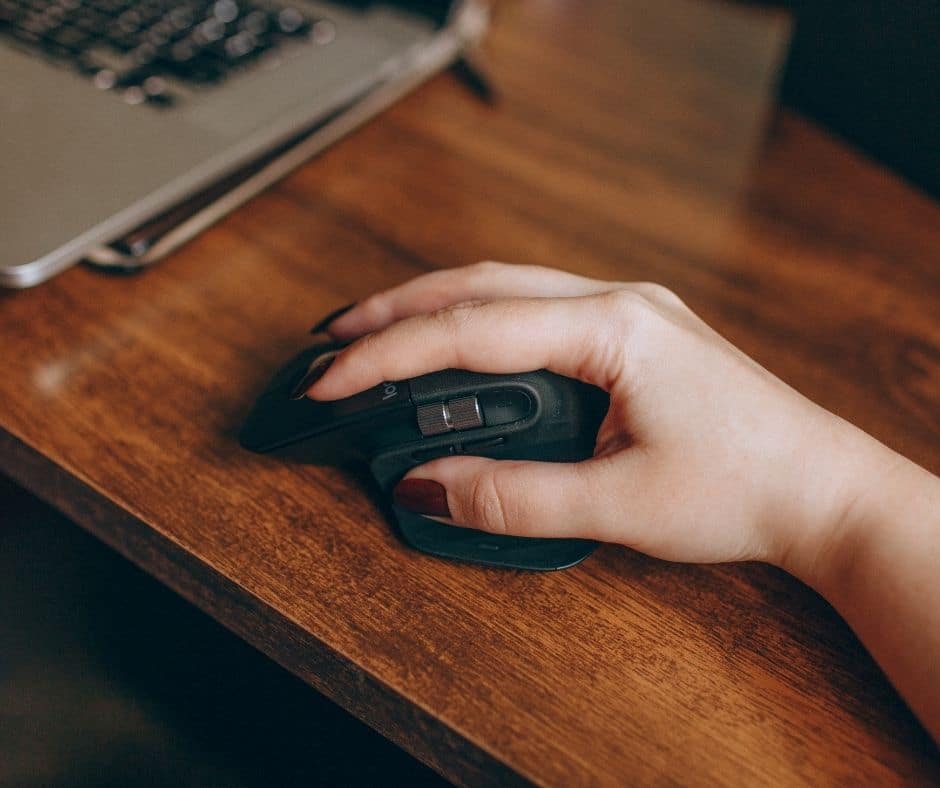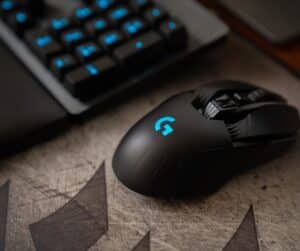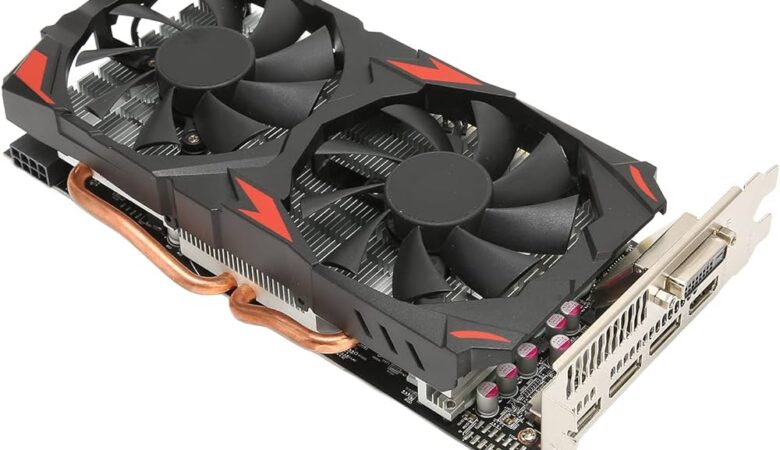A good wireless gaming mouse with USBC can be your most important companion when it comes to PC games. Having an accurate sensor that follows continuously and accurately will help you to take your shots regularly and navigate the game area successfully. However, flawless tracking is the lowest level you can expect from your mouse. There is so much space for a mouse to go above and beyond that, and one of the most intriguing is ditching cables.
Whereas wireless gaming headsets provide a layer of convenience, a wireless gaming mouse can really improve your gaming performance when compared to its corded counterparts. Wireless gaming mouse with USBC provides some of the simplest control in games since you never have to account for the additional resistance caused by the connection connecting it to your PC. That friction is inconvenient enough when accuracy is important, but it becomes exponentially worse when the cable catches on the back of your desk.
Fortunately, there are several options for wireless gaming mouse with USBC available that will liberate you from that cord without sacrificing performance. We’ve compiled a list of our top recommendations from the several models we’ve tested, so you can be confident you’re receiving a battle-proven wireless gaming mouse.
Certain Features of Wireless Gaming Mouse with USBC
With the exception of wireless communication and battery life, the key features of a wireless toy mouse are similar to those of a wireless mouse: the way you feel in your hand, the number and shape of the buttons, and the quality of the sensor. No matter how much gee-whiz factor a wireless gaming mouse with USBC has, you would never consider purchasing one if it does not feel nice in your hand and perform the functions you require. To learn more about those aspects and why they matter, continue reading to learn how to choose the best wireless gaming mouse with USBC.
However, there are a few minor variables for which the transition to wireless should affect your expectations. Most significantly for gamers, wireless mouse typically weighs slightly more than their wired counterparts due to the added components, including the aforementioned internal battery. However, when other factors are equivalent, the weight difference between wired and wireless is typically rather minimal. Only the most astute competitive player would truly understand the distinction.
What Connections to Look for While Purchasing Wireless Gaming Mouse With USBC?
Wireless connection is important to the success of a wireless gaming mouse. Mouse built for general web surfing and office work may get by with Bluetooth, but gaming requires a higher level due to the rapid and precise motions required. To achieve the degree of accuracy expected of gaming mouse, the majority of manufacturers employ a low-latency 2.4GHz wireless connection that communicates directly with a USB receiver hooked into your PC.
A wireless 2.4GHz configuration should be capable of establishing a sustained connection with no obvious input latency. Although these mouses are not exactly “lag-free”—there will always be some input lag—we’re talking fractions of a millisecond here. 2.4GHz connections are also more reliable than Bluetooth connections, which can become drowned out and briefly lose sync when there are too many adjacent signals.
While the low-latency connection is often the best option for gaming, it does have certain disadvantages. To begin with, it consumes more battery power than a Bluetooth connection. Due to this and RGB illumination, wireless gaming mouses deplete their batteries far more quickly than productivity mouses. Second, because the mouse is wirelessly connected through a USB dongle, the 2.4GHz connection is limited to PCs. If the mouse does not have Bluetooth, you will very certainly be unable to use it with a phone, tablet, or other devices that does not support USB. If the dongle is compatible with USB-C and you have a modern phone with a USB-C port, you can make the connection work, but it will be difficult.
Additionally, you’d be shocked how easily a USB dongle may be lost while switching gadgets, traveling, or relocating. Misplacing that small piece of plastic can render the mouse useless, so be prepared to turn your entire setup upside down to reunite them. An ideal wireless gaming mouse with USBC would incorporate a dongle storage slot or compartment into the body of the mouse, allowing you to safely store the dongle while not in use. Surprisingly, some mouses lack this critical convenience, therefore include it on your list of desired characteristics.
Popular Wireless Gaming Mouse with USBC
Corsair Dark Core RGB Pro SE
Wireless charging through Qi.
Excellent price.
The textured grip is unsettling.
Some users will be put off by the palm grip technique.
There are several excellent mice available, but if you have larger hands, even the greatest mouse may feel a little tight at times. When it comes to enjoying a gaming session, particularly a lengthy one, comfort is critical, and this holds true for the mouse as well. Therefore, if you’re looking for a wireless mouse that will fit comfortably in your larger hands, the Corsair RGB Wireless is perfect. It features a broad profile, which allows you to extend your fingers out somewhat, and a comfortable, spacious thumb grip. Its 130 grams of weight provide it a hefty feel.
Additionally, the Dark Core RGB Pro SE works nicely when combined with your preferred Qi wireless charging mouse pad; this is the ‘special edition’ designation. You can use this wireless gaming mouse with USBC for around 4-5 days before the battery is entirely depleted. Given the growing popularity of Qi wireless charging mousepads, the Dark Core is a fantastic future-proof mouse.
SUPERLIGHT Logitech G PRO X
It’s very simple.
Comes with extra feet and grip tape.
It is equal to many different types of catches.
The scroll wheel sometimes sounds dim.
For those who are absolutely committed to gaming with the lightest possible mouses, the Logitech G PRO X SUPERLIGHT is the greatest ultra-light wireless gaming mouse with USBC. It’s exceptionally light, weighing only 59g, which is particularly impressive given that it features a solid plastic shell and a rechargeable battery.
It connects wirelessly through its USB receiver and features a symmetrical form that makes it pleasant to carry for either right- or left-handed users. However, it is not a genuinely ambidextrous mouse, as the left side features merely a set of side buttons. Having said that, you can reprogram all buttons using the G HUB software, and you can even configure a G-shift button to activate the second layer of controls. Whether you’re taking split-second flick shots or methodically following your adversary’s moves around the battlefield, the experience feels incredibly swift and responsive, owing to the game’s extremely low click latency and superb mouse feet that glide really smoothly across mousepads and tables.
Razer Viper Ultimate Wireless Gaming Mouse With USBC
Lightweight.
Ambidextrous.
Long Battery Life/Fast Charging.
The right and left clicks feel a little frail.
Reduced number of programmable buttons compared to competitors.
The Razer Viper Ultimate is the best wireless gaming mouse with USBC for first-person shooter games. This lightweight, ambidextrous variant is ideal for left- or right-handed users. You may use it wirelessly or straight from your computer by plugging the USB receiver into the charging cradle, which works as a signal extension.
FPS players will appreciate the extremely low click latency, which creates an impression of speed and responsiveness while attempting that key headshot. It features a constant sensor, which ensures that your set CPI feels correct, which is important if you’re accustomed to precise settings. It features two buttons on each side, and you may designate a Hypershift button to activate the second layer of instructions for additional controls.
The Viper Ultimate has Razer’s HyperSpeed Wireless transmission, which results in a latency of less than 0.2ms, making it as quick as a cabled mouse. As with the Basilisk, the Viper Ultimate has a wireless charging dock that charges the mouse to full capacity in less than two hours. If accuracy and responsiveness are your primary concerns, the Viper Ultimate’s performance can rival some of the greatest gaming mice available.
Razer Naga Pro
Extremely comfortable for hands of medium or big size.
Numerous configurable buttons.
Incredibly minimal click latency.
The software is not compatible with macOS.
You can play a variety of genres and require a mouse that is capable of handling them all. The Razer Naga Pro is the best wireless gaming mouse with USBC available.
Whichever panel you pick, the associated software allows you to reprogramme all buttons. Additionally, you may customize the RGB lighting and create profile settings using the programme. These settings can be saved to the mouse’s onboard memory and transferred from game to game or device to device. Its click latency is great over its USB connection, which means that games will seem quite responsive. It wirelessly connects through a USB receiver that plugs straight into your computer or the accompanying signal extension.
Regrettably, its sensor is somewhat unreliable and frequently undershoots the specified CPI during rapid motions. Additionally, it is a pretty large mouse, which may make it tough for players with little hands to access all buttons. With that stated, this mouse is an excellent choice if you’re looking for a flexible wireless gaming mouse with USBC capable of adapting to a wide variety of game genres and tasks.
Logitech G305 LIGHTSPEED
Excellent Build Quality.
Low click latency. Heavy.
The Logitech G305 LIGHTSPEED is the finest cheap wireless gaming mouse we’ve tested. This cheap choice offers an ambidextrous design that is ideal for a fingertip grip regardless of the size of your hand. Its robust, plastic shell feels quite comparable to Logitech’s more premium products, and it’s really pleasant to use.
The mouse communicates wirelessly through a USB receiver, which may be stored inside behind the palm rest panel. It operates on a single AA battery, eliminating the need for a charging wire. It seems really quick and responsive in terms of performance, and you can customize the CPI settings to meet your personal needs. You may designate a G-Shift button to provide a second layer of controls via the software.
Regrettably, its tiny design makes it incompatible with bigger hands that use a palm or claw grip. Additionally, despite its little size, it is somewhat hefty, so gamers searching for a lightweight mouse may want to explore elsewhere. Another disadvantage is that the provided feet do not give the same level of smooth glide as those included with other gaming mouses, however, third-party feet are available. Having said that, this mouse is a decent alternative if you’re searching for a low-price solution without sacrificing features or performance.
After going through the primary aspects of selecting a wireless gaming mouse with USBC, it’s time for you to go out and discover one that works for you. As always, if you need assistance getting started, choose from the above list of top-rated wireless gaming mouses with USBC.
FAQs
What is the Primary Reason for Opting for Wireless Gaming Mouse with USBC?
Today, the majority of popular wisdom regarding wireless gaming mouses is incorrect. Certain wireless mouses remain more costly, and inferior models may drain their batteries in the middle of a match or have slowness due to a weak wireless receiver. However, the finest wireless gaming mouses function very identically to wired mouses, with no trace of the conventional lag or stutter.
How does a wireless gaming mouse with USBC communicate with my PC?
Most wireless mouses support both 2.4G wireless connections, which often require a special USB device and Bluetooth connections. While Bluetooth is more generally compatible with a variety of devices, it typically introduces delay into the connection, whereas a wireless connection almost eliminates it. As a result, wireless is the preferred way of connection for gaming.






